At one time it was said that a camera was only as good as its lens The Wrayflex, a single lens reflex camera [SLR] was made by Wray (Optical Works) Ltd a British company whose lens-making pedigree dated back to 1850 - you could say, almost to the beginning of photography. William Wray the founder was a solicitor and amateur astronomer who made his own lenses much as the pioneers of any Victorian trade. Wray lenses were highly respected and though businesswise they had their ups and downs the name lasted into the 1970s.
The fact that it was British was the clincher as in post-war Britain the Government Board of Trade would not permit foreign made cameras into the country freely as imports meant an outflow of cash which the UK didn't have. A clipping from the Amateur Photographer 9 December 1953
The Royal Festival Hall is here with the 1826 Shot Tower on the left [demolished to make way for the Queen Elizabeth Hall opened in 1969]. The site of the Festival is centre with St Paul's cathedral dome behind. Most of the Festival buildings had been cleared by the time I took these pictures in 1954. Today the London Eye wheel dominates the river bank.
The iconic cover design was by Abram Games It was into a low economy world that the Wrayflex camera was launched in May 1951. My memories of those dark years are hazy but there's enough left in the grey cells to rouse my fascination with the Wrayflex story. It is a lovely camera - sleek, stylish, immensely solid and by 1950s terms innovative. But and it is a big but.. the price for the basic camera and lens in 1951 - was £68. Sterling reference Lutton's List* or about fifth of the annual average wage.
The price barrier Such a high price would have prevented all but the wealthy from getting their hands on one - indeed I wonder who indeed bought a Wrayflex. I know a few were used in hospitals. By 1953 when the Amateur Photographer review was published the price had risen to £95 8s or about a quarter of the average annual wage.
Only 850 made of the first model Only 850 of Model 1 were made as it had a quirky frame size of 24 x 32 mm. Model 1a was very similar in general appearance but incorporated the more conventional 24 x 36 mm frame size - John Wade says about 1600 were made. For the Model 2 as I used around the world perhaps less than 350 were built so you'll have to bid or bargain. Thinks….there has to be more to this story than Wray and the Festival. A Wray
pamphlet outlining the Wrayflex says the story began in 1947
But how and why did a Royal Naval Commander come to have plans for a camera? The deeper story began in Continental Europe with the secretive work of Commander Studdert. And here I re-open the long unanswered question. Is the Wrayflex design British or German?
The Studdert family in Ireland were estate owners with a pedigree dating back to the early 17C and before that in historic Cumberland, England, now part of the County of Cumbria. The ancestral home in Ireland was Bunratty Castle, [1425] sold to the Studdert family in 1720. By 1804 the castle was in sad decay and the Studderts moved out. The castle is still standing and on the Clare tourist trail. The Studdert family tree is in Burkes Irish Peerage - you can see it on the web. The young Maurice was educated in England at a fee paying school, Aldenham, in rolling green countryside about 27 kms/ 17 miles NW of central London. When he was 19 he entered the Royal Naval Engineering College, Keyham in a suburb of Plymouth in Devon from where he qualified as a Lieutenant. Studdert's Naval career continued well until with experience in gunnery he was promoted to Commander and later credited with two inventions in ordnance. By 1944 he had been elected an Associate of the prestigious Institution of Mechanical Engineers.
Commander Studdert's secret life
Minden is an historic city dating back almost 1200 years and was severely damaged by allied British and American bombing in WWll. By 1945 Minden had been placed in the British Occupation Zone. [Picture after a bombing by the US Army Airforces March 28th 1945 - with thanks to Minden Community Archive]
BAOR - the British Army of the Rhine German scientists and technicians of all kinds were taken to Minden often in secret convoys to evade detection - there is at least one plausible account of this in British Army of the Rhine [BAOR] records. Abducting or coercing scientists and technicians was part of the game.
One BAOR memory suggests Studdert was at one time based in Berlin, the seat of the ACC and was part of the clandestine T-Force, the Target Force to procure secrets. But in 1947 he was in Minden with Royal Naval Section Research Branch. The National Archive at Kew holds many 'Top Secret' documents dating from this time. Later when recording Studdert's death in 1951 the Irish Clare Champion newspaper said 'his work was of a highly confidential nature connected with fire control and stabilisation'.
Studdert spoke German fluently
Positively Göbel
Considering the backdrop - I'm dubious. Not least because designing a camera would not have been a quick job even for Studdert and bearing in mind his work would he have had time? One memory related from the T-Force says they worked day and night including Saturdays and Sundays. If Studdert was the inventor, presumably he would have given some sketches to Harry Göbel but as far as I can see not even rough notes have been found.
London 1947 As the Cold War approached entire factories such as Zeiss and Agfa, complete with all their equipment and machinery, were moved to the Allied Zone to prevent their secrets falling into Russian hands. With the general upheaval, the camera design found its way to London. The story continues with the plans drawn in Germany being given to Wray (Optical) Ltd in 1947 and then re-drawn in Bromley with the help of the Göbel brothers who were brought to Britain by Studdert. The Göbel brothers were not alone, as scientists, technicians and sometimes their entire families were moved to Britain or the USA. In the oral history of the time it seems that Studdert's family felt the Unilflex was Maurice's idea while staff at the Wray works felt the idea had been picked up in Germany. According to John Wade the Göbel brothers spoke only German and returned to Germany once the British camera was in pre-production. Returning to the Clare Champion newspaper of 1951 it said of Maurice that ' stories of his charm will long be told by his friends and admirers'.
The Provenance of the Patents?
The Inventor was named as Maurice Eyre Persse Studdert without a mention of Harry or Werner Göbel. The first patent was applied for in 1947, just two months after the German plans had been signed in Minden by Harry Göbel. It is possible the Göbel brothers were in Bromley at the time of the application. One supplementary drawing for 'A reflex camera with curtain shutter ' was filed in May 1948 and bears an uncanny resemblance to one of Harry Göbel's drawings of 1947 (see Photographica world No 135 page 11**). Also so far it seems to have been missed that Maurice Studdert filed a Patent in Switzerland in his own name and giving his address as Waterford, Ireland. The Patent description is in French and the drawings are detailed. The date of the filing made by an agent in Geneva is May 21st 1948, with reference to the earlier application in Britain.. Other patents are dated 1948 and 1950 -1953. But again it is a very great possibility that all the designs were re-written German Patents or German design work. In the aftermath of the war the T-Force Allied teams scouring Germany took over as many as 170,000 German patents for UK use alone. see The National Archive or Longden's T-Force for references. A well documented example of taking German camera patents and using them for a British production can be seen in the Reid camera or 'British Leica' and I have added a footnote.***
But…….. Single Lens Reflex cameras were not new to photography and the
Uniflex or Wrayflex was not unique. One part of the early Wray patents was a provision
for measuring light or 'metering the light' via the lens and it seems it was never
incorporated in the final camera. Now that would have been something…….
Why to Wray?
By the late 1940's Maurice Studdert was seriously unwell and he died in March 1951 - apparently due to stress or something related. A death certificate from Ancestry / Find my Past would soon clarify the cause. The camera was launched at the Festival of Britain two months later.
In the model
1a the frame size was 24 x 36mm or in line with the majority of 35mm film cameras
at that time. Externally and mechanically the models were much the same. See John
Wade The Wrayflex Story for finer details.
As the Wrayflex was handmade it could not compete on price or with the more sophisticated design of the Japanese imports.
Wrayflex shutter testing by hand in Bromley - from the Wray pamphlet.
Spin 1950s style Now back to the Clare Champion report on Commander Maurice Studdert's death ' It is probable however that more will be heard of his latest camera which is now sweeping the dollar market' . The Big Question Now that big question - what do I feel about the provenence? My Wrayflex worked for thirteen months without a single fault. The camera, though cushioned in my bag received a pounding on corrugated dirt roads for thousands of kilometres. The highest point of the journey was 5,180 metres / 15,995 feet. The coldest place was minus 10C in the Andes mountains and the hottest and driest probably well over 40C was in the Dasht-e-Lut Afghanistan - said to have the world's hottest land surface . The most humid place was in tropical Bolivia where we experienced heavy rain non-stop for twenty four hours.
Take a look at the first two models. Outwardly they have brilliantly clean, uncluttered German lines - almost Bauhaus clean. And like the Leica lll of 1939 the shutter speed dial is set by lifting and turning - also the Wrayflex has the standard German thread for a tripod mounting. I think I'll toss a coin and wait for some comments to come in from Germany.
Meine Wrayflex-Welt - Die Kamera ist es Deutsch oder Britisch? -----------------------------------------------------------------------------------------------------------
My thanks to Tom Lutton 2017 for such an inspirational camera - also look out for Tom's classic work on early SLRs Lutton's List [Web PDF download*]
The Reid camera of 1953 looks like a Leica and apart from the name and manufacture it is a Leica - so much so it was known as the 'British Leica'. In this advertisment in the 1959 British Journal of Photography Almanac the German origin is not mentioned and like the Wrayflex it was presented as British The Reid lll resembled the German built Leica llla of the mid to late 1930s and was made by Reid & Sigrist Ltd in Leicester, England Planning started in about 1947 or much the same time as the Wrayflex was in gestation in Bromley and the first Reid was not on the public market until about 1951. The Reid lll was based on designs and patents seized by the Allies after WWll and it's production was backed by orders from the British Ministry of Defence. MOD models were marked WD and a vertical arrow. For many years the perceived wisdom was that 'the armed forces needed a 'Leica-quality camera' so Reid & Sigrist were requested to build one. Reid & Sigrist had a background of defence work. But looking back to the original Leica llla, the pre-WWll German production had been in the order of 92,500 so there should have been plenty around on the used / s/h / military requisition / market. The Reid lll was lovely camera and it came with a splendid Taylor Taylor Hobson lens, yet only 1600 were made and production of all Reids including a simplified model ceased in 1964.
Oh what shenanigans - defence contracts and seized patents then a British patent in 1953...... phut. PS .....a Reid lll in superb working condition is running at almost 3K GBP [2018]
RETURN TO THE STORY AND CONTENTS
| |||||||||||||||||
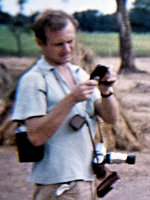
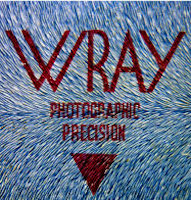
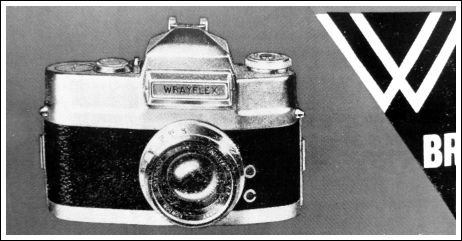
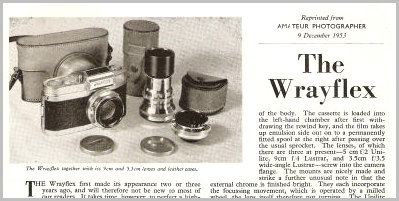 My
attachment to the Wrayflex began in 1952 when as a schoolboy photographer I simply
could not afford such a classy camera. It was new and talked about in the photographic
Press 'lenses giving a very fine performance' … 'an entirely original
British design '… 'Made in Bromley, Kent'.
My
attachment to the Wrayflex began in 1952 when as a schoolboy photographer I simply
could not afford such a classy camera. It was new and talked about in the photographic
Press 'lenses giving a very fine performance' … 'an entirely original
British design '… 'Made in Bromley, Kent'. .jpg)
.jpg) The
Festival was a massive Exhibition show-case of British goods and ideas
set on London's South Bank. The site included many Pavilions, the Dome of Discovery
and an iconic aerial sculpture, the Skylon, all of which were demolished but the
Royal Festival Hall still stands as a reminder of the Exhibition. The Festival
was visited by over 8 million people. Like many, including my wife Marion, I was
taken to the Festival by my parents.
The
Festival was a massive Exhibition show-case of British goods and ideas
set on London's South Bank. The site included many Pavilions, the Dome of Discovery
and an iconic aerial sculpture, the Skylon, all of which were demolished but the
Royal Festival Hall still stands as a reminder of the Exhibition. The Festival
was visited by over 8 million people. Like many, including my wife Marion, I was
taken to the Festival by my parents. 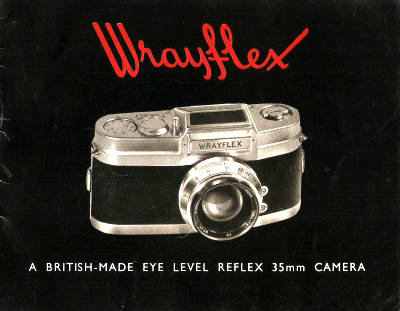 In
cash terms today [2018] a good working model of the original Model 1 with lens
and its beautifully crafted leather case with even the buckles covered by leather
could touch £1000.00. As a guide to the condition - look for marks on screws
which reveal amateur repairs.
In
cash terms today [2018] a good working model of the original Model 1 with lens
and its beautifully crafted leather case with even the buckles covered by leather
could touch £1000.00. As a guide to the condition - look for marks on screws
which reveal amateur repairs.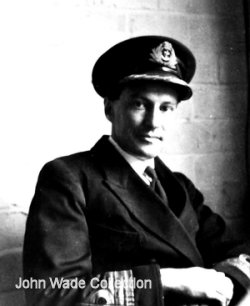 Maurice
was the son of John Alfred [aka Jack] Studdert who according to the 1911
Census was of the Church of Ireland and a 'farmer and land agent' and Mary Persse.
Maurice was born in Limerick on 29th March 1910
Maurice
was the son of John Alfred [aka Jack] Studdert who according to the 1911
Census was of the Church of Ireland and a 'farmer and land agent' and Mary Persse.
Maurice was born in Limerick on 29th March 1910 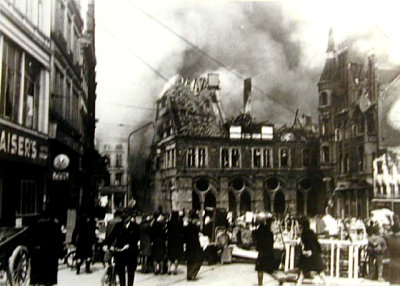 To
put it mildly post war Europe was a mess. Many German towns and cities had been
flattened by British or American bombing leaving thousands of civilians on the
move - the so-called 'displaced persons'. At the end of the war the countries
were occupied by armed forces of the victorious powers.
To
put it mildly post war Europe was a mess. Many German towns and cities had been
flattened by British or American bombing leaving thousands of civilians on the
move - the so-called 'displaced persons'. At the end of the war the countries
were occupied by armed forces of the victorious powers. 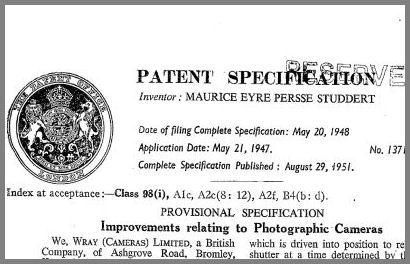 All
the Wrayflex patents are on the web and all the patents were filed in the name
of Wray (Cameras) Ltd, a British Company of Ashgrove Road, Bromley Kent suggesting
a new company had been formed specifically for the camera.
All
the Wrayflex patents are on the web and all the patents were filed in the name
of Wray (Cameras) Ltd, a British Company of Ashgrove Road, Bromley Kent suggesting
a new company had been formed specifically for the camera. 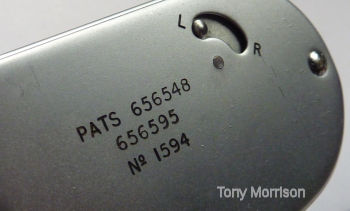 For
the Wrayflex it is clear that the ownership of the design was of almost obsessive
importance to Maurice Studdert and the early Wray cameras carried a Patent number
on the bottom plate.
For
the Wrayflex it is clear that the ownership of the design was of almost obsessive
importance to Maurice Studdert and the early Wray cameras carried a Patent number
on the bottom plate.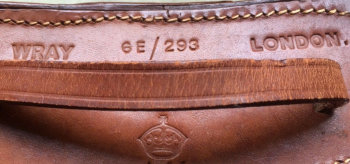 Wray
mark with a MOD Crown
Wray
mark with a MOD Crown 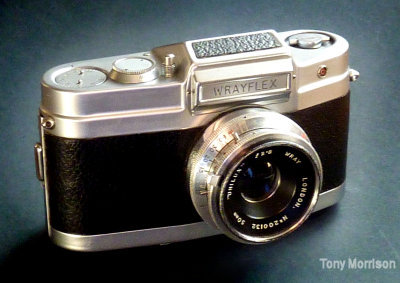 By 1953 the design
had been changed slightly - most notably the original frame size was 24 x 32 mm.
By 1953 the design
had been changed slightly - most notably the original frame size was 24 x 32 mm.
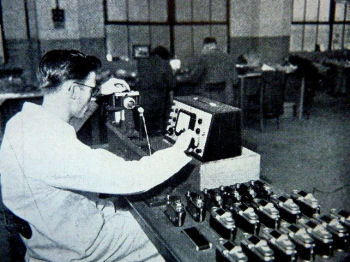 Production
ceased in the early 1960s as sales were very small - less than 350 of Model ll
were made as the Board of Trade had lifted import restrictions so Nikons, Canons,
Yashicas and more foreign goods flooded in.
Production
ceased in the early 1960s as sales were very small - less than 350 of Model ll
were made as the Board of Trade had lifted import restrictions so Nikons, Canons,
Yashicas and more foreign goods flooded in.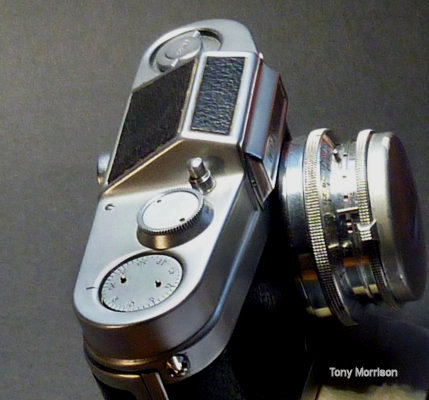 To
me the observable and written facts tend to lean towards the idea that the Uniflex
- Automat: Kleinbildkamera of Harry Göbel's 1947 drawings was originated
in Germany.
To
me the observable and written facts tend to lean towards the idea that the Uniflex
- Automat: Kleinbildkamera of Harry Göbel's 1947 drawings was originated
in Germany.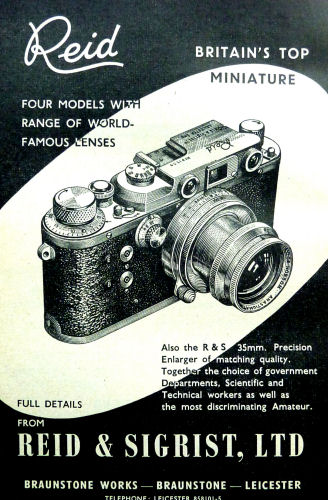 ***
Footnote
***
Footnote